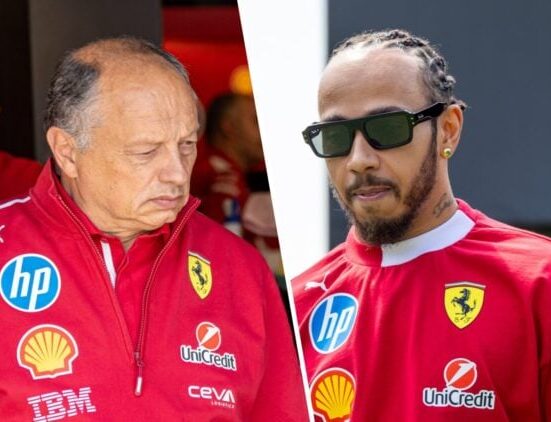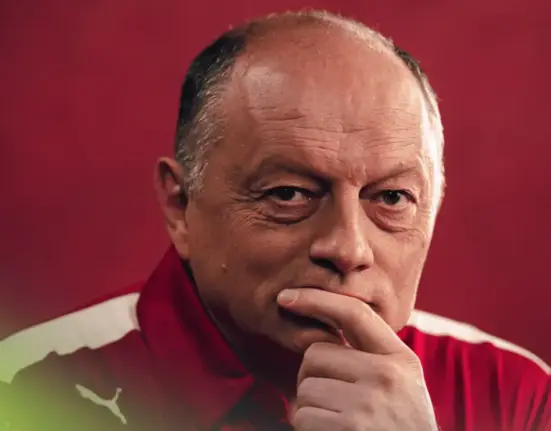Formula 1 pre-season testing takes place once again to commemorate the start of a new season, and F1 Oversteer is going to tell you all you need to know.
Albert Park in Melbourne will play host to the Australian Grand Prix on 16th March for the first time since 2019, which will be Lewis Hamilton’s first race with Ferrari.
Two weeks prior to that, Hamilton and the 19 other drivers on the grid will get the chance to drive their 2025 car extensively during the three days of testing that will take place in Bahrain.
This is everything you need to know about the test including where it takes place, how you can watch it on TV, and when Hamilton is set to drive Ferrari’s new car first.

Where does F1 pre-season testing take place?
Pre-season testing for the F1 season takes place at the Bahrain International Circuit, which is located just outside of the city of Manama and is the home of the Bahrain Grand Prix.
Bahrain has traditionally played host to pre-season testing largely due to the steady climate, as anywhere in Europe could see adverse weather interrupt important running.
Teams need to use the time on track to gather important data and effectively work out if there are any teething problems that could take too long to address during race weekends.
Where can I watch F1 pre-season testing?
Fans who have F1 withdrawal symptoms will be able to watch all of pre-season testing on TV as it is televised.
Sky Sports F1 is the exclusive rights holder for F1 in the UK, which means they will be broadcasting all of it on their channel.
Elsewhere outside of the UK, fans can watch all of testing through F1 TV which is where Sky Sports will be getting its feed.
What are the timings for F1 pre-season testing?
The tests take place over the course of three days between Wednesday 26th February and Friday 28th February.
The track will be open for eight hours each day, starting at 10am local (7am GMT) and ending at 6pm local (3pm GMT). Teams will want to ensure that there is as much running as possible, so they will try to avoid red flags or stoppages if they can.
FIA Race Control also usually mandates a practice start sequence for one of the days, just to test all of their transponder and timing systems.
| Day | First session | Second session |
| Wednesday 26th February | 10am – 2pm (7am – 11am GMT) | 3pm – 7pm (12pm – 4pm GMT) |
| Thursday 26th Februrary | 10am – 2pm (7am – 11am GMT) | 3pm – 7pm (12pm – 4pm GMT) |
| Friday 26th Februrary | 10am – 2pm (7am – 11am GMT) | 3pm – 7pm (12pm – 4pm GMT) |
When will Lewis Hamilton take to the track for the first time with Ferrari?
Testing a lot more limited now compared to previous years, when teams had at least six days. Now that has been shortened to three for cost-cutting measures. The teams can either split their running between drivers or give one driver a whole day’s worth of running.
They tend to alternate between a half day and two full days for either driver, although that may vary depending on experience and any problems that could be thrown up.
It is currently unknown what the plan is for each individual team, but this will be updated when that info becomes available. Each driver should get at least 12 hours in the car over the three days, barring any injuries, illnesses or significant crashes.

What do teams do during F1 pre-season testing?
Data is the currency for F1 teams and they will be using the three days to gather as much information about their cars as possible, whether it’s for reliability or setup purposes.
This year’s cars are largely evaluations of last year’s, so there should not be too many teething issues that impact them.
You will see them send their cars out with aero rakes attached to their cars, which look like fancy pieces of scaffolding but actually play a crucial role in understanding their cars.
They are used to measure the air pressure over the car at any point, with multiple probes attached to a metal fence over a specific area of the car either near the diffuser, sidepods, or front wing.
They measure the air at every angle and are more reliable than the pitot tubes, which sit at the top of the bulkhead of most F1 cars and resemble an aerial, because of the G-force F1 cars face through high-speed corners.
Teams will also spray ‘flow-vis’ paint on their cars, which is a synthetic paint that can show engineers the direction of airflow. Some teams use a mix of colours while others also have ultraviolet paint, to prevent prying eyes from seeing information taken by photographers.










Leave feedback about this